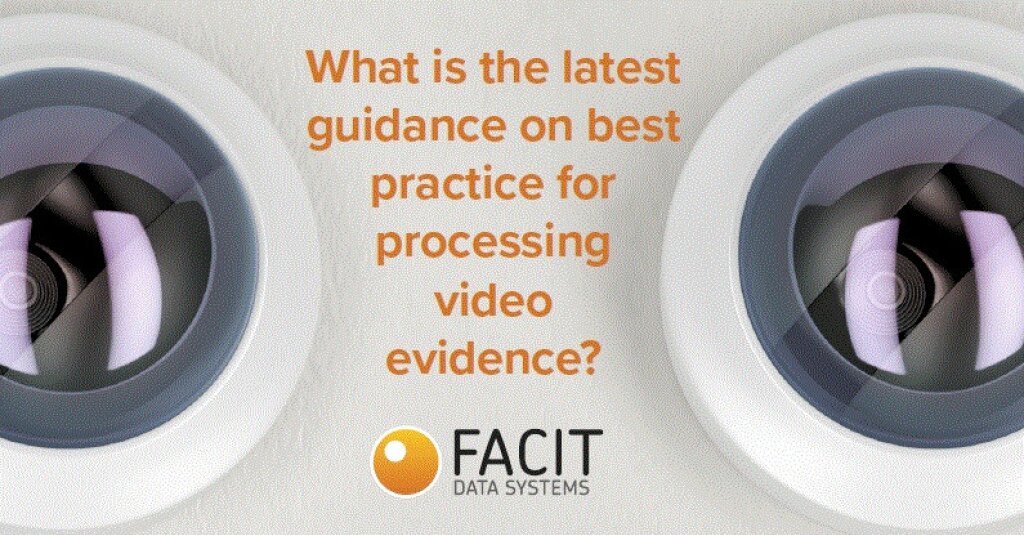Video Redaction Procedural Update
Here we look at how the demand for data redaction (blurring/removal) has increased significantly and has broadened in scope to include audio as well as images.
The current mass availability of video footage and changes in data processing technology have led the government to update its Procedural guidelines.
GDPR and pandemic stimulate increase in data requests
Requests for video evidence have increased significantly in the past decade. The requests are frequently made by individuals in the form of data subject access requests (DSARs).
The biggest increases in individual DSARs occurred after the introduction of GDPR in 2018, following which the public became far more aware of their data privacy rights.
There was a further increase during the Covid pandemic, when widespread furloughs and redundancies prompted employees to investigate data held on them by their employers.

What is the latest guidance on best practice for processing video evidence?
Video use in legal matters
There has been a comparable increase in requests for, and the use of video in legal matters, where video footage forms part of the evidence for either the prosecution or the defence.
In the commercial world, a large percentage (up to 70% in the clinical sector) of video data requests are instigated by law firms and insurance companies who initiate DSARs as the first stage in their Discovery and Claims procedures.
Prevalence of CCTV cameras
The large-scale deployment of CCTV cameras and the advances in digital technology, together with the audio frequently associated with it, mean that digital imagery is now an intrinsic part of everyday life and is a key enabling technology for the police and public.
In a 2013 report, the British Security Industry Association (BSIA) estimated there were between 4-5.9 million cameras in the UK, but as recently as 2020, most people appear to agree on a figure of 5.2 million CCTV cameras nationwide.
Britain has more surveillance activity than any other European country per capita – latest CCTV statistics show that there is one security camera for every 13 people.
Preparing prosecution files – redaction requirement
When preparing prosecution files, video footage must be carefully redacted to protect sensitive information and ensure compliance with legal and data protection requirements.
Key elements requiring redaction include faces of uninvolved individuals, minors and vulnerable persons to maintain privacy.
Identifiable features such as tattoos, vehicle licence plates and addresses should be obscured to prevent unintended identification.
Any confidential or legally privileged information, including documents visible in the footage, must also be removed.
Audio should be redacted to exclude private conversations, sensitive witness details or legally inadmissible statements.
Law enforcement techniques, operational tactics and security-sensitive material must be blurred or muted where necessary.
Redactions should be clearly documented, ensuring the integrity of the evidence is preserved while meeting legal obligations.
Cameras reduce crime
Surveys show that video monitoring can reduce certain types of crime. The College of Policing’s Crime Reduction Toolkit suggests that CCTV is “associated with a statistically significant decrease in crime.”
According to one study, crime decreased by 13% in places with CCTV, compared to places without it. It also revealed that certain types of crime are affected by the presence of CCTV: drug-related crime decreased by 20%, and vehicle and property crime by 14%.
Increasing police use of video and multimedia evidence
Owing to the increase in the amount of video evidence solicited, stored and presented in court by the police, there has been a recent update to recommendations on best practice.
With CCTV and video such an integral part of crime prevention and safety procedures, the document that originated as the Digital Imaging Procedure in 2002, was updated in November 2021 as Digital Imaging and Multimedia Procedure v3.0.
The Digital Imaging and Multimedia Procedure is a guide for practitioners within the police and CJS who are involved with the capture, retrieval, storage or use of evidential digital images, and associated audio and metadata, either generated by the police or recovered from witnesses under the Criminal Procedure and Investigations Act 1996.
It is intended to inform operational, administrative and judicial staff involved at all stages of the Criminal Justice System (CJS).
Procedure V3.0 enhances the integrity of proper evidential gathering processes while reducing the risk of malicious manipulation. Procedure V3.0 recognises that there is now a broader range of technologies available for the capture and storage of digital imagery, which frequently has associated audio and metadata. Hence the broadening of the document title to include the term ‘multimedia’.
Master copy and working video copies
Procedure V3.0 specifies that once the Master has been defined and stored, all use of images should be from a Working Copy. It states that bit-for-bit copies should be used (where possible) for further reproduction of additional Working Copies or where precise detailed analysis is to be carried out or when images are to be enhanced.
Preparing prosecution files – redaction requirements
Along with CPS liaison and footage audit trail recommendations, Procedure V3.0 states that officers responsible for file preparation should be cognisant of any redaction requirements where personal data is not to be shared with the defence or third parties.
Facit enables operators to copy with the scale and complexity of data privacy processing
The sheer volume of video and audio data available that is required as evidence presents a considerable challenge for the police and any other operators trying to implement and follow best data processing practice.
Facit Data Systems’ data masking, video redaction solution, Identity Cloak, incorporates auto-tracking and artificial intelligence to enable users to remove all but the subject(s) of interest rapidly in video footage to be shared with third parties or presented in court.
The solution is very simple to use and assures users of cost-effective compliance. Identity Cloak is becoming the ‘go-to’ technology as the amount of video processing required is set to increase year-on-year. The software also has the capability to extract audio files in order to add context and clarification to important evidential data.



